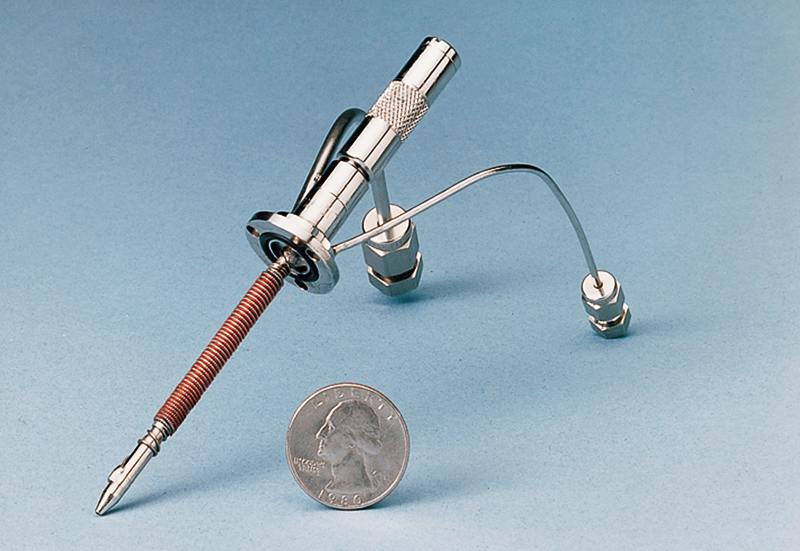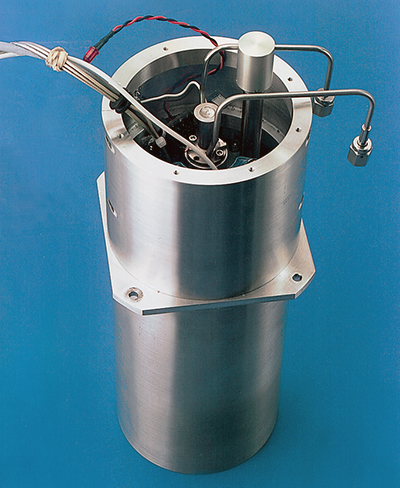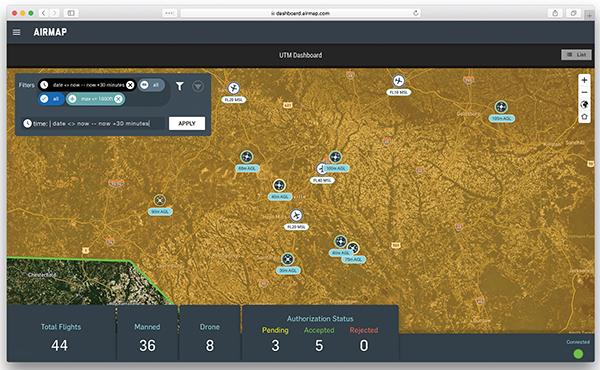
Portable Radiation Detectors
An advancement in more portable radiation detectors was made possible by satisfying a NASA need for a non -clogging Joule-Thomson (J-T) cryostat to provide very low temperature cooling for various sensors.
Through a Small Business Innovative Research (SBIR) contract from Kennedy Space Center, General Pneumatics Corporation's Western Research Center (GP WRC) in Phoenix, Arizona was tasked to overcome reliability problems and other shortfalls in conventional J-T cryostats. Later, GP WRC worked with EG&G ORTEC in Oak Ridge, Tennessee, to apply the technology to cooling high-resolution gamma-ray spectrometers, under a contract to Bechtel Nevada. The U.S. Department of Energy's Remote Sensing Laboratory in Nevada, operated by Bechtel Nevada, directed the development.
J-T cryostats produce cryorefrigeration by expanding a gas from high pressure through a nozzle. In many uses, the cryostat automatically regulates the flow to provide rapid cooldown and then conform to match the heat load. A common problem in conventional cryostats is that the very small diameter orifice of the nozzle can easily become clogged by contaminants in the flow.
In the NASA SBIR project, GP WRC developed an anti-clogging, flow-regulating J-T cryostat. The GP WRC cryostat design has a tapered annular expansion nozzle which is highly resistant to clogging due to a large ratio of circumference to flow area. Grooves in the nozzle increase flow friction to allow wider, less clog -susceptible passage. Turbulent voids continuously break up and clear contaminants from the flow. The GP WRC J-T cryostat design allows several hours of continuous operation with gas contamination levels that would clog conventional cryostats within six minutes.
GP WRC's J-T cryostat also solved flow regulation difficulties in cooling the gamma-ray detectors. Flow regulation is induced by the heat content of the return flow gas, instead of by the temperature near the nozzle as in conventional cryostats. This provides a large flow for fast cooldown, while conserving gas according to the heat load at operating temperatures.
This NASA-supported cryostat development played a key part in the development of more portable high -purity germanium gamma-ray detectors. Such are necessary to discern between radionuclides in medical, fuel, weapon, and waste materials. Despite the abatement of the Cold War, the ability to monitor nuclear materials, verify possible hazards, and develop counter proliferation tactics has become increasingly crucial to global security.
A high-purity germanium gamma-ray detector is typically cooled with liquid nitrogen, which may take10 hours or more because of the relatively large, thermally-isolated mass. The dependence on liquid nitrogen severely limits the mobility and continuous operating time of such detectors. Electric-powered mechanical cryocoolers induce unwanted vibration or are too bulky and power-consuming to be very portable. Thermoelectric coolers, while vibrationless, cannot achieve the necessary temperature or power efficiency.
Essential to developing a more portable gamma-ray detector unit was the J-T cryostat expertise gained by General Pneumatics as a result of its NASA SBIR project. The outcome was a cryostat that can cool gamma-ray detectors, without vibration, using compressed gas that can be stored compactly and indefinitely in a standby mode.
In addition to the gamma-ray detector application, General Pneumatics has parlayed its NASA-backed research to produce custom J-T cryostats for other government, commercial, and medical applications.

J-T cryostats produce cryorefrigeration by expanding a gas from high pressure through a nozzle.

General Pneumatics cryostat nozzle work was pivotal in building more portable gamma-ray detectors. A prototype J-T cryostat-cooled HPGe high-resolution gamma-ray detector is designed to monitor nuclear materials.













